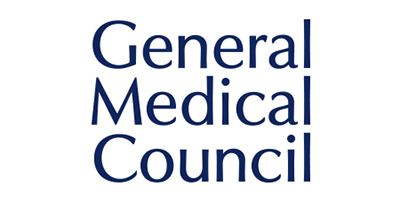Ear Correction (Pinnaplasty)
Pinnaplasty is an operation to reposition prominent ears closer to the head but it does not reduce the size of the ear.
Who is suitable for pinnaplasty
Pinnaplasty is usually performed on people, including children, with prominent ears that are self-conscious amnd may have been teased about them. Surgery should help to improved self-esteem.
The initial consultation
I will ask what worries you about your ears what it is that you wish to change. It is important to be honest and forthright as surgery is always tailored to your specific needs and expectations. I will place you in front of a mirror and ask you to put push your ears into the position you would like them. Please bear in mind, that you need to have realistic expectations.
I will take a full medical history including any previous surgery, cosmetic or non-cosmetic, medication you are currently taking and allergies and whether you smoke. i will also ask whether you have had any mental illness.
The examination will concentrate on your proposed treatment, but also assess your general fitness and suitability for surgery. Routine photographs will be taken. I will then discuss all available options and the one that will best suit you. Surgery is usually done under a general anaesthetic (where you go to sleep) but can be done under a local anaesthetic) by numbing the ears.
Surgery takes approximately about 2 hours and is a daycase procedure.
The surgery i usually perform involves making an Incisions behind the ear and putting stitches into the cartilage to bend it towards the head. These are covering with a thin layer of tissue and the wound is closed with a dissolvible stitch. Dressing are put over the ear and then a headbandage. This should stay in place for at least 10 days.
The Surgery
The method i usually use involves making an incision behind the ear and putting stitches into the cartilage so the ear bends towards the head. These stitches are covered with a thin layer of tissue and the wound is closed over the top, using dissolvible stitches.
Risks
If performed by a fully qualified and accredited Plastic Surgeon in a proper operating theatre under sterile conditions on a relatively fit and healthy patient, pinnaplasty is a safe procedure.
There are certain risks however and these should be disussed at your consultation.
Bleeding and bruising after the surgery can occur, which can rarely require a return to theatre to remove bllod clots.
Wound breakdown is rare
Infection can happen but it usually occurs 7-10 days after surgery.
Wounds may be slow to heal. Skin may die over the front of the ear and may need dressings or surgery but this is rare.
Sensation are often numb for a week or so after surgery but this is usually temporary. Very rarely it is permanent.
Scars may become thickened (keloid) or widened and treatment is available to help with this.
Asymmetry one ear is usually more prominent than the other and this may to some extent be case after surgery. No shape or prominence is guarenteed.
Cysts these are very unusual and occur if a small piece of skin is left deep to the wound.
Recurrence this can happen if the ear is pulled forward forcefully in the first few weeks after surgery and at any time if the stitches knot unwinds - it is very unusual however.
Skin contour irregularities contour irregularities and depressions may occur after otoplasty. Visible and palpable wrinkling of skin and ear cartilage can occur.
Preparation for surgery
Your BMI should be less than 30 and you should mentally and physically fit. You should stop smoking 6 weeks before surgery and can start again when the wounds have healed at 2-4 weeks. Please do not take aspirin, naproxen for 10 days before surgery. You should have a shower the night before or the day of surgery. I will have emailed you a consent form, which you should print, read and sign and date the bottom of each page and bring the full document with you on the day of surgery , so that we can sign the last page together.
What to bring with you
Toiletries , and regular medications and dont forget the tennis head bandage. You should wear this at night for 4 weeks after the head bandage has been removed.
The day of surgery
On the ward before surgery i will measure how prominent each ear is and how you would like them to be after surgery. Dressings are put over the ears and then a headbandage that covers most of the head, like the headguards worn by Rugby players . This should stay in place for at least 10 days.
Recovery period
It is a day case procedure and you should arrange for someone to drive you home. It is advisable to make arrangements for help at home during your convalescence, which should be at least the first fortnight, especially if you have young children.
Arrangements will be made for you to see a Plastic Surgery Dressings Nurse after 10 days to have your head dressing removed and your wounds cleaned. Although the ears initially appear bruised, the colour and bruising and swelling settles down very quickly. You should then wear the tennis head bandage at night for 4 weeks.
You can return to work one-two weeks after surgery.
Contact sports should be avoided for four to six weeks following surgery and strenuous activity which could increase your blood pressure should be avoided for approximately four weeks.
If you are worried post operatively
Please call the hospital ward you were on or Jan Richards 07722841078 9am-2pm monday-friday.
In an emergency, you may need to seek advice or attend your local hospital Accident and Emergency department.
Appointments
These can be made directly through the hospitals, via my PA Jan Richards or completing the form in the 'Contact' link above.





